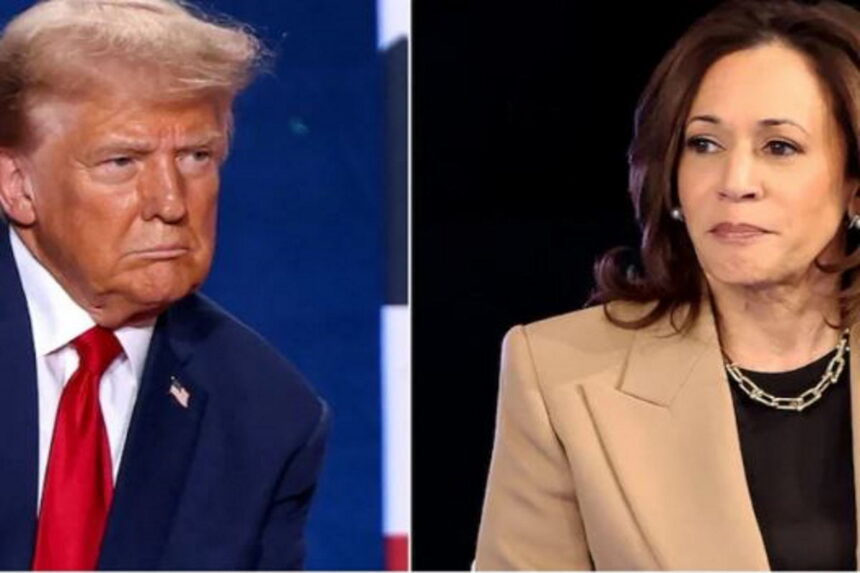As the hours before voters throng to the polling stations, tension in the U.S. election has reached an all-time high. The tension between former President Donald Trump and Vice President Kamala Harris sets up what looks to many experts like probably one of the closest races in recent times.
Not seeing either side take a lead, we sought the opinion of political analysts, pollsters, and election experts to give an idea of what might happen on Election Day. While crystal ball predictions are still hazy, several critical factors are emerging that may swing the final judgment.
Election on the Knife’s Edge
At least, as of now, it’s a very close race. As reported by informed analysts and pollsters, one word kept recurring in the discussions: uncertainty. The financial markets say go with Harris, but the betting markets say go with Trump. National polls favor Harris, but by a margin so small that within the statistical error range, for election watchers, this translates into undecided polls. And the swing states are more unpredictable than ever.
Yet with all this turbulence in the air, the Trump camp is cautiously optimistic. In the last few weeks, his rating has risen steadily, especially in those crucial swing states. Harris was miles ahead early on, but the late momentum of Trump is the reason for hope among his supporters. With both candidates polling within narrow margins, experts are very guarded against drawing any firm conclusions based on national polls alone. With all these in play, the subtleties of this race are likely to be decided state by state, county by county, and will simply be too close to call with confidence.
Battlefield States and Early Voting Patterns
If this election is indeed too close to call, then the path to victory lies in a few critical swing states: Pennsylvania, Michigan, Wisconsin, and Nevada. These states have gained notoriety for flipping between the parties because of tight races, and this year is no different. Trump’s team says it’s concerned about Pennsylvania, where Harris’s camp has turned into a strong ground game. High early voting numbers in Pennsylvania hint at enthusiasm among Democratic voters, with many of Harris’s supporters voting early in big numbers.
Keystone State has both presented an opportunity and a challenge for Trump. There is an immense feeling of satisfaction in garnering the votes of Pennsylvania; however, any blunder here would seriously siphon his hopes in the general elections.
Early voting in other states reflects a few rays of hope for the GOP. Traditionally, Republicans are election-day voters, with many of its supporters wary of mail-in or early voting. But in one key respect, Trump’s effort has encouraged mail balloting and other forms of early voting this cycle, and his party has performed better than many pundits had forecast.
The result is a tactical pivot from 2020, when Democrats locked down millions of votes early, on their way to victory in the presidency and Senate. If Republicans continue to bank early votes at their present rates, Trump may have the edge in the close states.
But Harris has focused much of her effort on grassroots mobilization, especially in those swing states where voter turnout may make all the difference between winning and losing. Her “get out the vote” plan is designed to get as many of her most consistent Democratic voters to vote early.
As voting is expected to be heavy, complacency on the part of either of these two campaigns will prove disastrous. This is especially so in places like Michigan and Wisconsin, where the difference could well come down to a few thousand votes.
Trump’s Amazing Comeback
Donald Trump’s resurgence has perhaps been the most surprising factor of this election cycle. Since his loss in 2020 and the January 6 controversies, many of the keenest political observers felt that his prospects for ever again laying claim to the presidency were not merely slim but none. At least up until now, however, the former president has bucked those trends, rallying his base while persuading some of those who have remained undecided.
His polling numbers today are higher than at any point during his 2016 and 2020 campaigns – a development that has emboldened his allies and concerned his rivals. The apparent improvement in Trump’s numbers may reflect methodological changes on the part of pollsters criticized for underestimating his support in previous contests, some political analysts have said.
Others say that is because he has a more clarified message and cemented his base. Trump’s campaign is even confident he can capture the popular vote this election cycle, which has always escaped him during his presidential runs.
After all, late breaks in voters have changed the direction of elections, such as in 1980 when Ronald Reagan pulled ahead after a debate to convincingly win. If Trump can repeat that pattern, he just might pull off one of those unexpected victories on election night.
The Harris campaign still attempts to be optimistically cautious. Set against a few polling challenges, Harris’s team views Trump’s resurgence as a possible overestimation of his supporters might be over-representative in some polls, leading to overestimation in his results.
Against the shocks of the 2016 and 2020 elections, which underestimate Trump’s support, Harris’s strategists are holding onto hope that her base will turn out in record numbers and counteract Trump’s momentum.
Final Predictions: What Experts Say
Because this is truly a close competition, none of our experts will commit to firm predictions. With razor-thin margins in key swing states, a slight change could still drop either candidate. Polling, early voting, and historical trends point toward this being a very unpredictable outcome. What all analysts can agree on is that this election is genuinely too close to call.
The campaigns have spent millions on outreach, media, and voter mobilization, and all indications are that this will be one of the closest presidential contests in American history. Behind the scenes in the Trump camp, there seems to be cautious optimism that this recent momentum can take him across.
His advisors point to polling where his gains have been dramatic-in Ohio and North Carolina. That might turn into a fresh appeal for voters still undecided, but to give them the edge. For now, Trump’s team is laser-focused on getting that big turnout in the countryside and suburbs, since the president sees those areas as integral to his pathway to victory.
For its part, the Harris campaign is banking on a big turnout-especially among the young and minorities. Her strategists remain optimistic that their focus on early voting will eventually pay off, particularly in states like Michigan and Pennsylvania, where the early Democratic turnout has been strong. Harris’s campaign believes that her message of unity and stability will assuage those who fear another four years of Trump.
Because the race is so close, it all comes down to turnout, and both campaigns are banking on their bases showing up in record numbers.
The Stakes and What to Expect on Election Night
For the future of America, this is a meaningful election. With it marking his victory over political elitism and a reassessment of the influence it had over his life, for the followers of Donald Trump, signifies his return to the White House; for his supporters, Vice President-elect Kamala Harris, the election marks progress as well as continuity, the promise of stability after several turbulent years.
The final hours of one of the most consequential elections in recent American history tick down. With many of the swing states too close to call and one or two last-minute surprises perhaps in store, anything can happen.




